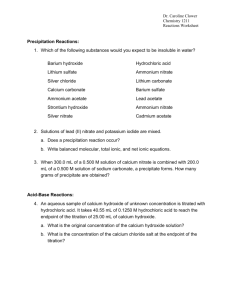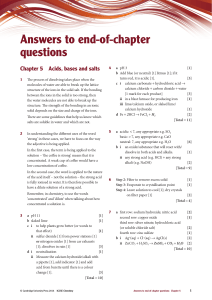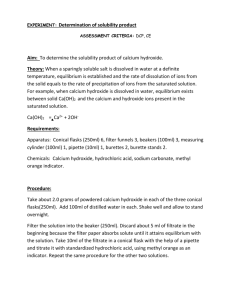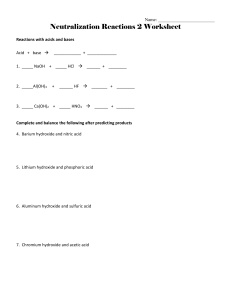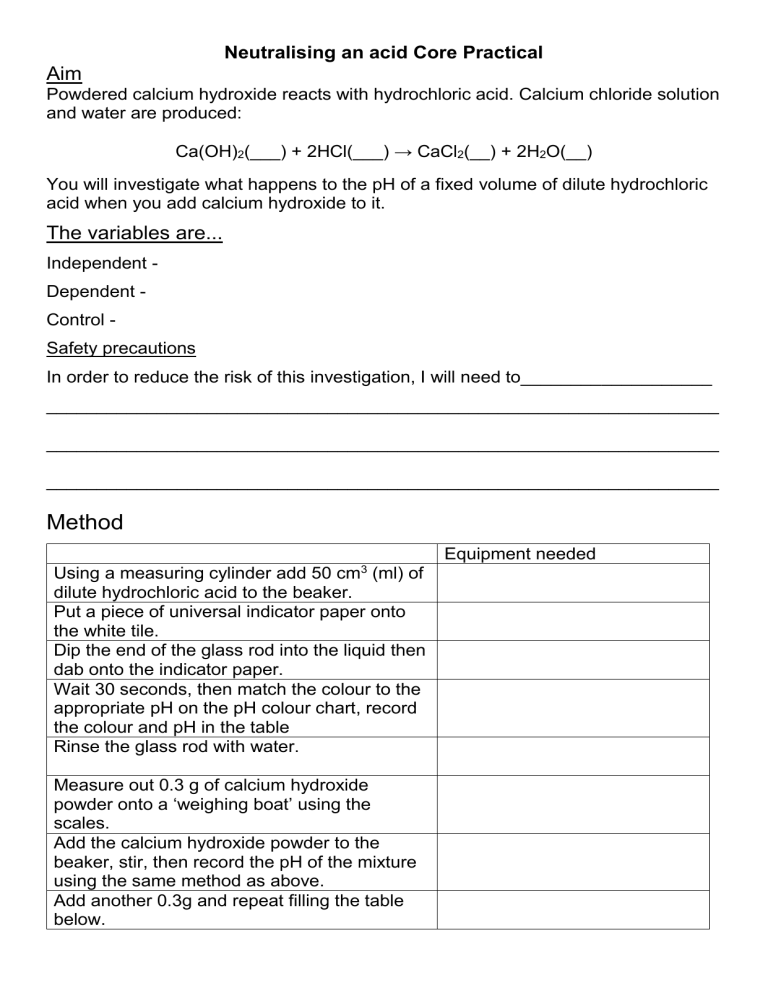
Neutralising an acid Core Practical Aim Powdered calcium hydroxide reacts with hydrochloric acid. Calcium chloride solution and water are produced: Ca(OH)2(___) + 2HCl(___) → CaCl2(__) + 2H2O(__) You will investigate what happens to the pH of a fixed volume of dilute hydrochloric acid when you add calcium hydroxide to it. The variables are... Independent Dependent Control Safety precautions In order to reduce the risk of this investigation, I will need to___________________ ___________________________________________________________________ ___________________________________________________________________ ___________________________________________________________________ Method Equipment needed 3 Using a measuring cylinder add 50 cm (ml) of dilute hydrochloric acid to the beaker. Put a piece of universal indicator paper onto the white tile. Dip the end of the glass rod into the liquid then dab onto the indicator paper. Wait 30 seconds, then match the colour to the appropriate pH on the pH colour chart, record the colour and pH in the table Rinse the glass rod with water. Measure out 0.3 g of calcium hydroxide powder onto a ‘weighing boat’ using the scales. Add the calcium hydroxide powder to the beaker, stir, then record the pH of the mixture using the same method as above. Add another 0.3g and repeat filling the table below. Mass of calcium hydroxide (g) 0.0 0.3 0.6 0.9 1.2 1.5 1.8 2.1 2.4 Colour pH
